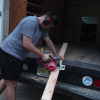
7 Mistakes Every RV Owner Has Made and How to Avoid Them
Loading up the RV and hitting the open road for that adventure vacation of a lifetime is one of life’s greatest treasures. Of course, you’ve planned this trip, gone over the maps, and studied leave-no-trace camping principles until you can recite them in your sleep. But as the saying goes, “Everyone has a plan until they get punched in the face,” metaphorically, of course.
7 common mistakes RV owners make

Traveling in an RV offers many benefits. The ability to take your home, or at least your hotel room, wherever you go appeals to many people. Additionally, an RV kitchen provides the ability to cook meals while on vacation, letting you save money and eat healthier. Ensure your RV vacation is a success by avoiding these seven common mistakes.
1. Buying (or renting) the wrong RV
RVs come in many shapes, sizes, and floorplans. Camper Report warns against not doing enough research before picking an RV. Some RV parks restrict RVs over 10 years old and others, especially National Park campgrounds, have maximum length requirements. While it is important to pick an RV floorplan that your family will enjoy, selecting a model you can handle safely is equally critical.
Every vehicle on the road must comply with weight limits. Safety is especially critical when considering the car you plan to tow a trailer-type RV with, but every recreational vehicle owner should know their limits and stay within them.
2. No practice or training before your first trip
If you’ve never pulled a trailer or driven a large truck, consider investing in an RV training course. This course should cover topics like planning an RV-friendly route, performing a pre-departure walk around, checking tire condition and inflation, and ensuring that stairs, hoses, electric cables, and awnings are properly stowed before travel.
If attending an RV training course isn’t possible, consider joining social media groups where you can ask questions and watch online videos produced by RV owners. Also, find a large empty parking lot and practice driving and backing around cones, laundry baskets, or empty cardboard boxes before loading up and hitting the open road.
3. Not allowing enough clearance
Your vehicle is likely under 6 feet tall and wide and under 18 feet long. Any RV capable of sleeping more than two people is much larger than that. For example, a small Coachmen Class C is nearly 11 feet tall, over 8 feet wide, and 27 feet long.
Some large Class A RVs approach 45 feet in length and 14 feet in height. Pulling a 40-foot trailer with a 25-foot truck is another typical example.
When driving a recreational vehicle, it is critical to keep its size in mind when planning your route, making fuel stops, and approaching overpasses. A good RV trip planning tool or RV-specific GPS makes planning more manageable but not foolproof.
4. Not using a spotter when backing into parking spots or campsites
KOA recommends always using a spotter when backing into parking spots or campsites. In addition, having someone outside the RV to “watch out for people, debris, rocks, and low-hanging tree branches to ensure the RV does not get damaged” is always a good idea, whether backing into a spot or navigating any restricted areas.
5. Using gray and black tanks wrong
A clogged RV waste tank is a big plumbing problem known to end trips without proper attention. Keep in mind that anything going down an RV kitchen sink drain has to make its way out of the RV waste tank, through a valve, and out the end of a hose. Cooking grease and food scraps will clog this system and may require professional intervention.
Black tank problems are more common, however, and more disgusting. Nevertheless, they are easily prevented with a few things to consider. Solids, including poop and toilet tissue, will pile up below the toilet into a pyramid capable of reaching the flush valve. Prevent this pyramid by keeping the black tank dump valve closed until at least ¾ full, limiting the amount of tissue introduced to the system, and using plenty of water when flushing the toilet.
Toilet tissue is a hotly debated topic among recreational vehicle groups. Some use any septic system safe brand, others swear by RV-specific tissue, and some say that paper has no place in an RV sewer tank. Whichever route you choose, water is the key.
6. Overdriving and RV in one day
With all the excitement surrounding a big trip, focusing on getting to your destination is understandable. However, RV Share warns against trying to go too far too fast.
Instead, they recommend limiting travel days to 300 miles and staying at each major destination for at least two nights with a full day for exploration. Depending on the destination, one day will likely leave you wishing for more.
7. Overplanning
Similar to overdriving, overplanning leads to rushing through a trip. Don’t confuse this with no planning because arriving at a major destination without reservations is never a good idea. However, instead of stuffing every minute of your day with places to be and things to see, consider scheduling one out of every few days as free time. You can use these days to relax or to explore a local sight that wasn’t on your radar before you arrived.
Enjoy your RV adventure
Now that you are packed and ready to hit the road, slow down long enough to enjoy the adventure. Remember that things will happen, you will miss a turn, you may have a water leak, and you might even get lost. Still, don’t let those things ruin your trip because they’re all part of the adventure.



